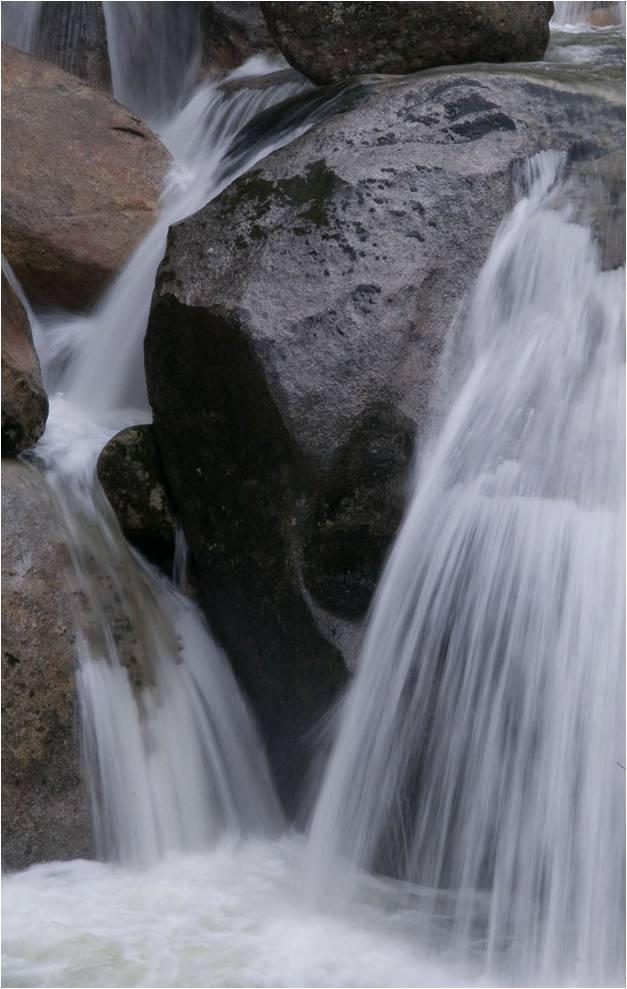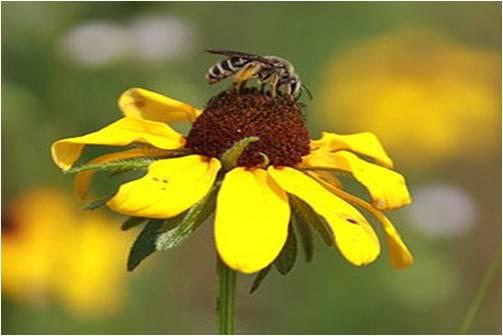Benefits of Green Infrastructure
As of 2008, the total estimated water infrastructure needs for the United States included:
- $63.6 billion for combined sewer overflow control; and
- $42.3 billion for stormwater management.
See: Clean Water Needs Survey 2008
Since this estimate includes only 22 percent of regulated municipal separate storm sewer systems (MS4s), the need for stormwater management is probably much greater. As communities develop and climate patterns shift, the need to replace, rehabilitate, and upgrade aging infrastructure will continue to grow.
Single-purpose gray stormwater infrastructure is largely designed to move urban stormwater away from the built environment, while green infrastructure reduces and treats stormwater at its source while delivering other environmental, social, and economic benefits. Introducing green infrastructure to supplement the existing gray infrastructure can promote urban livability and add to communities’ bottom line.
On this page:
Water Quality and Quantity
 Water Quality: Stormwater runoff from urban areas delivers pollutants— including pathogens, nutrients, sediment, and heavy metals—to our streams, lakes, and beaches. In cities with combined sewer systems, high stormwater flows also can send untreated sewage into our waters. By retaining rainfall from small storms, green infrastructure reduces stormwater discharges. Lower discharge volumes translate into reduced combined sewer overflows and lower pollutant loads. Green infrastructure also treats stormwater that is not retained.
Water Quality: Stormwater runoff from urban areas delivers pollutants— including pathogens, nutrients, sediment, and heavy metals—to our streams, lakes, and beaches. In cities with combined sewer systems, high stormwater flows also can send untreated sewage into our waters. By retaining rainfall from small storms, green infrastructure reduces stormwater discharges. Lower discharge volumes translate into reduced combined sewer overflows and lower pollutant loads. Green infrastructure also treats stormwater that is not retained.
Flooding: Conventional stormwater infrastructure quickly drains stormwater to rivers and streams, increasing peak flows and flood risk. Green infrastructure can mitigate flood risk by slowing and reducing stormwater discharges.
Water Supply: Rainwater harvesting and infiltration-based practices increase the efficiency of our water supply system.
- Water collected in rainwater harvesting systems can be used for outdoor irrigation and some indoor uses and can significantly reduce municipal water use.
- Water infiltrated into the soil can recharge ground water, an important source of water in the United States.
Private and Public Cost Savings: Basing stormwater management systems on green infrastructure rather than on gray infrastructure often results in lower capital costs for developers. The savings result from lower costs for:
- site grading, paving, and landscaping; and
- smaller or eliminated piping and detention facilities.
In cities with combined sewer systems:
- green infrastructure controls can cost less than conventional controls ; and
- green-gray approaches can reduce public expenditures on stormwater infrastructure.
Visit these resources to learn more:
- Green Infrastructure Research
- Green Infrastructure Opportunities that Arise During Municipal Operations
- Burnsville Rainwater Gardens (PDF)(9 pp, 955 MB, About PDF) Exit
- Barton CSO Control Project
- Stormwater Runoff Quality and Quantity from Traditional and Low Impact Development Watersheds Exit
- National Pollutant Removal Performance Database (PDF)(10 pp, 1.2 MB, About PDF) Exit
- Colorado Climate Preparedness Project Exit
- Council for Watershed Health Water Augmentation Study Exit
- Reducing Stormwater Costs through Low Impact Development (LID) Strategies and Practices
- Milwaukee, Wisconsin Case Study (PDF)(5 pp, 417 K, About PDF) Exit
Air Quality
 Ground-Level Ozone: When nitrogen oxides and volatile organic compounds interact in the presence of heat and sunlight, they create ground-level ozone or "smog." Smog conditions are usually worst in the summer and can lead to respiratory health problems. Vegetation can reduce smog by
Ground-Level Ozone: When nitrogen oxides and volatile organic compounds interact in the presence of heat and sunlight, they create ground-level ozone or "smog." Smog conditions are usually worst in the summer and can lead to respiratory health problems. Vegetation can reduce smog by
- reducing air temperatures,
- reducing power plant emissions associated with air conditioning, and
- removing air pollutants
Particulate Pollution: The tiny bits of dust, chemicals, and metals suspended in the air we breathe are called particulate matter. It can enter our lungs and cause serious health effects. Trees, parks, and other green infrastructure features can reduce particulate pollution by absorbing and filtering particulate matter.
Health Effects: Breathing smog and particulate pollution can cause respiratory ailments, including chest pain, coughing, aggravation of asthma, and even premature death. In their triple bottom line study on the benefits of green infrastructure, the city of Philadelphia found that increased tree canopy could reduce ozone and particulate pollution levels enough to significantly reduce mortality, hospital admissions, and work loss days.
Visit these resources to learn more:
- Air Quality Research
- Ground-level Ozone Pollution
- Heat Island Mitigation
- Air pollution removal by urban trees and shrubs in the United States (PDF)(9 pp, 970 K, About PDF) Exit
- Particulate Matter Pollution
- United Kingdom Forest Research-Improving air quality (PDF)(7 pp, 51 K, About PDF) Exit
- City of Philadelphia Triple Bottom Line Assessment
Climate Resiliency
Communities across the country are feeling the effects of climate change right now. Depending on where a community is located, climate change poses different threats to critical infrastructure, water quality, and human health. Fortunately, green infrastructure can help communities become more resilient to the impact of climate change.
See: Green Infrastructure for Climate Resiliency
Habitat and Wildlife
 Habitat Improvement: Vegetation in the urban environment provides habitat for birds, mammals, amphibians, reptiles, and insects. Even small patches of vegetation like green roofs can provide habitat for a variety of insects and birds. By reducing erosion and sedimentation, green infrastructure also improves habitat in small streams and washes.
Habitat Improvement: Vegetation in the urban environment provides habitat for birds, mammals, amphibians, reptiles, and insects. Even small patches of vegetation like green roofs can provide habitat for a variety of insects and birds. By reducing erosion and sedimentation, green infrastructure also improves habitat in small streams and washes.
Habitat Connectivity: Large-scale green infrastructure, such as parks and urban forests, help to facilitate wildlife movement and connect wildlife populations between habitats. Learn how Loxahatchee, Florida, is protecting the local watershed and conserving native ecosystems through the Loxahatchee Regional Greenways System.
Visit these resources to learn more:
- Green Infrastructure Research
- Landscape For Life Exit
- Green Roofs and Facades: A Habitat Template Approach (PDF)(15 pp, 415 K, About PDF) Exit
- Green Infrastructure Center Exit
- Loxahatchee Regional Greenways System Exit
Communities
 Green Jobs: Green infrastructure can reduce a community’s infrastructure costs, promote economic growth, and create construction and maintenance jobs. As demand for green infrastructure skills increases, a range of new training and certification programs is emerging.
Green Jobs: Green infrastructure can reduce a community’s infrastructure costs, promote economic growth, and create construction and maintenance jobs. As demand for green infrastructure skills increases, a range of new training and certification programs is emerging.
Health Benefits: More green space and parks encourage outdoor physical activity, reducing obesity and preventing associated chronic diseases, such as heart disease, high blood pressure, stroke, Type II diabetes, arthritis, and certain kinds of cancer.
Recreation Space: Vegetation and trees can increase publicly available recreation areas, allowing urban residents to enjoy greenery without leaving the city. Additionally, vegetation and permeable pavements can reduce noise pollution by damping traffic, train, and plane noise.
Property Values: Using green infrastructure in construction and increasing vegetation and tree cover can increase property values, benefiting both developers and homeowners.
Visit these resources to learn more:
- Urban Forests and Green Stormwater Infrastructure EXIT
- Enhancing Sustainable Communities with Green Infrastructure
- Green Infrastructure Opportunities that Arise During Municipal Operations
- City Parks, Clean Water: Making Great Places Using Green Infrastructure(52 pp, 3.57 MB, About PDF) Exit
- The Value of Green Infrastructure: A Guide to Recognizing Its Economic, Environmental and Social Benefits (PDF)(80 pp, 16.3 K, About PDF) Exit
- The Economics of Low-Impact Development: A Literature Review Exit
